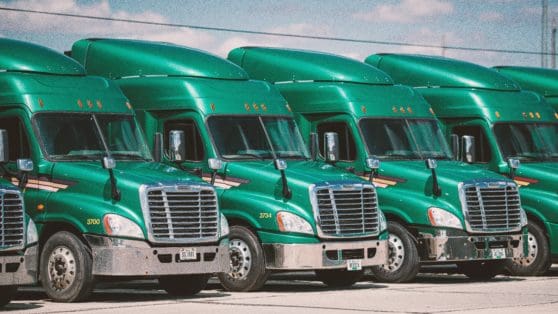Driver retention has been a huge hurdle among fleet companies. Although employment is projected to grow 2% from 2019 to 2029, the COVID-19 pandemic made driver recruiting and retention more challenging. According to the American Trucking Association, a shortage of 65,000 drivers could rise in the next five years unless fleet companies take intermediary steps.
Why Are Drivers Leaving the Industry?
There are a lot of reasons for truck driver shortage. Truck driver shortage can be attributed largely to demography, low wages, and poor working conditions. Retiring drivers are often hard to replace as younger generations tend to look for less physically demanding jobs.
Working as a fleet driver is a huge lifestyle change. The job is not for everyone. Spending long hours on the road and away from home can be taxing to even the most tenacious fleet driver. However, successful fleet companies know how to attract truck drivers and keep attrition to a minimum by creating a culture that benefits both the company and the drivers.
Here are some ways to retain truck drivers.
Positive Recognition
Many fleet companies rely on dash cams to see how drivers interact with other motorists and how they behave on the road. While basic dash cams are helpful in increasing visibility and reducing risks, they offer only a limited view of what drivers do.
What drivers need is a complete feedback system that lets them know how they are doing in real-time. Driveri® focuses on positive driving by rewarding drivers with points for good driving. This is the only system that focuses on the overall performance of drivers versus what they lacked.
The platform analyzes driver behavior, provides safety alerts and captures good driving moments. Drivers receive a score and see how they perform against other drivers in the fleet. Depending on the company, the reward can be cash incentives or more time off the road. These could be a part of the company’s driver retention program.
Competitive Pay
In May 2020, the average pay for truck drivers was $47,130. However, the lowest 10 percent receive less than $30,660. Increasing the per-mile rate can help companies attract and keep top talent.
In addition to higher pay, fleet companies can boost driver morale by allowing more time spent off the road. Although the Federal Motor Carrier Safety Administration regulates driving hours, there is still a lot of work done outside that window. Loading and unloading cargo, waiting for shippers, and other non-driving activities take up a lot of drivers’ time. With good compensation, drivers can find the motivation to show up and put in the good work.
Safety Culture
Establishing a culture of safety within the company helps boost public image and trust. Through careful screening and selection, fleet companies can get the best drivers in their team. However, hiring is only one part of the equation.
Drivers need regular safety training to remind them of the importance of driving mindfully and safely. Although fleet drivers already know the basics of driving defensively, a hectic day on the road can throw safe driving practices to the wayside.
Another thing to factor in is vehicle selection and maintenance. A good driver won’t be efficient on the road if his vehicle keeps on breaking down halfway through his destination. Crash testing vehicles and regular checkups and maintenance will help drivers do their jobs more efficiently.
Communication & Support
Almost every employee issue can be tied back to communication. Performance and productivity issues are usually a result of unclear expectations of employees. To boost engagement and encourage drivers to go the extra mile, fleet companies need to have a communication plan to create awareness of the successes and challenges within the company.
Internal communication can also help drivers understand what is expected of them. Casual chat between managers and team members can be used to learn more about employees’ progress, challenges, and expectations. Even with a driver management system in place, fleet managers need to reach out to employees and offer ways to make daily routines run more smoothly.
Independence & Respect
Job satisfaction and driver retention happen when employees feel trusted and respected. Every driver needs to feel that they are part of the team. This is tied to having regular communication with drivers in the fleet. The more that managers get to know each employee, the more they feel valued.
When drivers come forward with complaints, fleet managers need to treat the situation with empathy. Drivers who feel valued in a company treat their jobs with accountability, which helps improve productivity within the team.
Good Management
Being a fleet manager is a tough job. You need to wear different hats, sometimes all at the same time. From purchasing vehicles to boosting team morale, a fleet manager has a lot on their plate. Drivers rely on good leadership to steer them in the right direction.
Truck driver retention is a result of good management, so fleet managers need to be more aware of the challenges in the field. With Netradyne’s fleet management software, there’s no more second-guessing what drivers are doing on the road. Managers can already identify performers and those who need more guidance through the data provided. Use the advanced data to improve processes, safety, and employee experiences.
Final Thoughts
Truck driver shortage is a challenge that can be overcome by good management and sound working practices. Adjusting company culture to be more driver-centric can help fleet management companies keep the best drivers and avert road mishaps.
Learn everything you need to know about fleet management in this blog.







